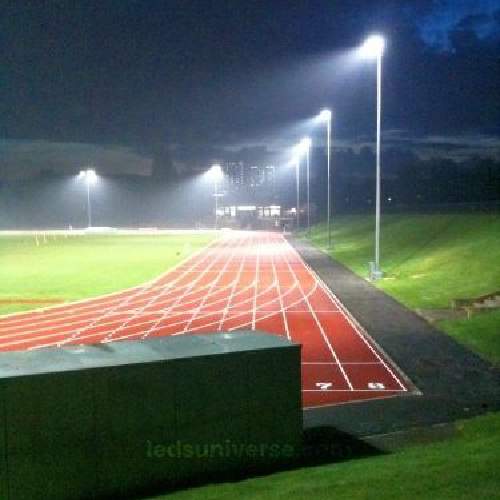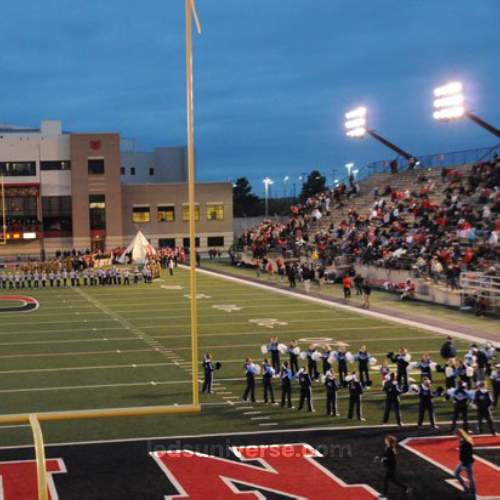Optimal Lighting Levels and Brightness

Importance of Adequate Lighting Levels
Achieving the right lighting levels on athletic fields is essential for creating an optimal playing environment. Adequate lighting enhances visibility and ensures that players can perform at their best, regardless of the time of day or weather conditions. Each sport has specific lighting requirements tailored to its unique demands. For instance, football fields typically require a minimum of 300 lux to ensure that players and spectators can see the action clearly. This level of illumination helps in distinguishing the ball, players, and field markings, contributing to a better overall experience.
Specific Lighting Requirements for Different Sports
Different sports have varying lighting needs based on the size of the field and the nature of the game. Soccer fields, for example, require approximately 500 lux to ensure that the entire field is well-lit. This higher level of illumination is necessary to accommodate the faster pace of the game and the larger playing area. Baseball fields, with their expansive outfield and intricate field markings, often need up to 700 lux. This increased brightness helps in maintaining clarity and precision during gameplay, allowing players to track the ball and make accurate plays.
Importance of Uniform Lighting
Uniformity in lighting is equally crucial as achieving the right brightness. Ensuring that all areas of the field are evenly lit helps in preventing shadows and dark spots that can adversely affect gameplay. Shadows can obscure critical areas of the field, leading to potential safety hazards and reduced performance. Even light distribution helps players by providing consistent visibility, which is especially important for fast-paced sports where quick reactions are essential. Proper lighting design minimizes dark patches and ensures that every part of the field is illuminated to the same standard.
Compliance with Lighting Standards
Compliance with national and international lighting standards is essential to ensure that the lighting system meets all necessary requirements for safety and performance. These standards provide guidelines for the minimum lux levels required for different types of sports and help in maintaining uniformity across various fields. Adhering to these standards not only enhances the playing experience but also ensures that the lighting system is reliable and effective. It is crucial for sports venues to regularly review and update their lighting systems to remain in line with evolving standards and technological advancements.
Achieving the Right Balance
Striking the right balance between brightness and uniformity is key to optimal athletic field lighting. While higher lux levels provide better visibility, they must be carefully managed to avoid issues such as glare and light pollution. Proper lighting design involves selecting the right type of fixtures and positioning them strategically to achieve the desired lighting levels without compromising on quality. Additionally, integrating advanced lighting controls and technologies can further enhance performance by allowing for adjustments based on specific game requirements or environmental conditions.
Lighting Design Considerations

Height of Light Poles
The height of the light poles significantly influences the effectiveness of athletic field lighting. Poles that are too short may result in insufficient coverage, while those that are too tall could cause glare and uneven light distribution. Typically, light poles for athletic fields range from 20 to 80 feet in height, depending on the size of the field and the type of sport. Proper placement and height adjustment are essential to achieve optimal lighting and ensure that all areas of the field are well-illuminated.
Beam Angle and Distribution
The beam angle of the lights determines how light is spread across the field. A wider beam angle is necessary for larger fields to ensure comprehensive coverage. Adjusting the beam angle helps in minimizing shadows and achieving a more uniform light distribution. Advanced lighting solutions often come with adjustable beam angles, allowing for fine-tuning based on the specific needs of the field.
Color Temperature
Color temperature affects how players and spectators perceive the lighting. For athletic fields, a cooler color temperature, around 4000K to 5000K, is typically preferred. This range provides a daylight-like effect, enhancing visibility and reducing eye strain. It also helps in distinguishing between colors and improving contrast, which is particularly useful for sports that involve fast-moving objects.
Installation and Maintenance Best Practices
Proper Installation Techniques
The installation of athletic field lighting requires careful planning and execution. Proper alignment and positioning of light poles are crucial for achieving the desired lighting effect. The installation team should ensure that all poles are securely anchored and that wiring and connections are correctly installed to prevent any issues. Regular inspections during the installation process can help in identifying and addressing potential problems before they affect the lighting performance.
Regular Maintenance Checks
Maintaining athletic field lighting involves routine checks and servicing to ensure that the system remains in optimal condition. Regular maintenance tasks include cleaning light fixtures to remove dust and debris, checking for any misalignment, and replacing bulbs or fixtures as needed. It is also important to inspect electrical connections and wiring for any signs of wear or damage. Implementing a scheduled maintenance plan can help in extending the lifespan of the lighting system and ensuring consistent performance.
Smart Lighting Controls
Integrating smart lighting controls can enhance the functionality and efficiency of athletic field lighting. Automated systems can adjust the lighting based on time of day, weather conditions, or specific game requirements. For instance, dimming the lights during practice sessions and increasing brightness for night games can help in managing energy usage and extending the life of the lighting equipment. Smart controls also allow for real-time monitoring and adjustments, providing greater flexibility and convenience.
Athletic and Sports Field Lighting Products from LedsUniverse
Over the years, LedsUniverse has established itself as a leading manufacturer and distributor of high-quality LED lighting solutions for athletic fields. Their innovative approach to lighting technology ensures that sports venues receive optimal illumination tailored to their specific needs. From football stadiums to track and field events, LedsUniverse offers a comprehensive range of products, including floodlights, panel lights, and reflector lights.
Their commitment to advancing LED technology has resulted in a diverse product lineup designed to meet the demands of various sports fields. For instance, the Ace Floodlight is a popular choice for many athletic lighting projects, offering robust performance and adaptability to different pole heights. LedsUniverse continues to push the boundaries of lighting innovation, focusing on sustainability and energy efficiency to provide superior solutions for both indoor and outdoor sports venues.
Conclusion
Proper lighting is a fundamental aspect of any athletic field, significantly enhancing the game experience for players and spectators alike. By focusing on optimal lighting levels, thoughtful design considerations, and best practices for installation and maintenance, sports venues can achieve superior illumination that supports performance and safety. Companies like LedsUniverse play a crucial role in this evolution, offering advanced LED lighting solutions that cater to the diverse needs of athletic fields worldwide. As technology continues to advance, the future of athletic field lighting promises even greater innovations, ensuring that every game shines brightly and every moment is illuminated to perfection.

